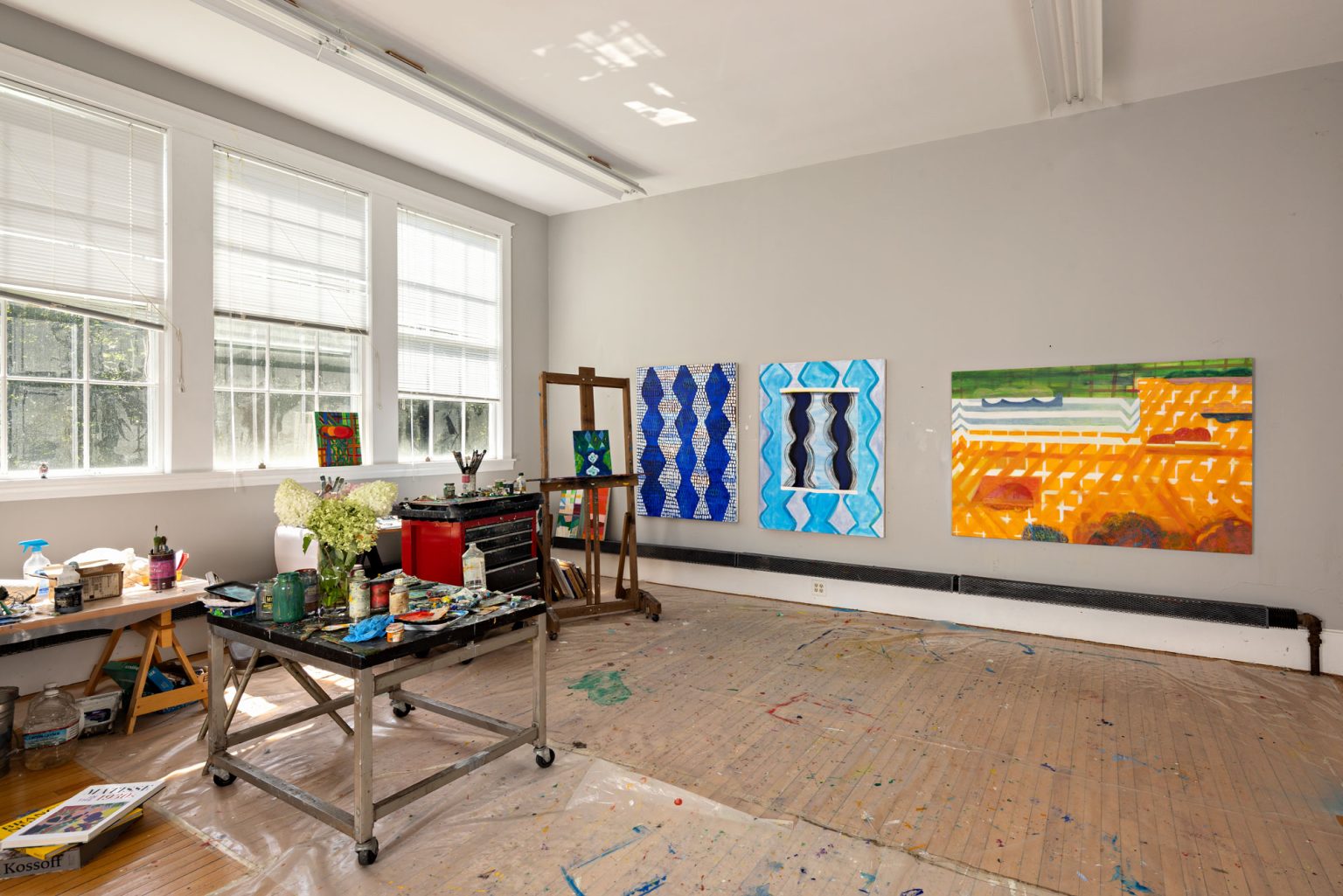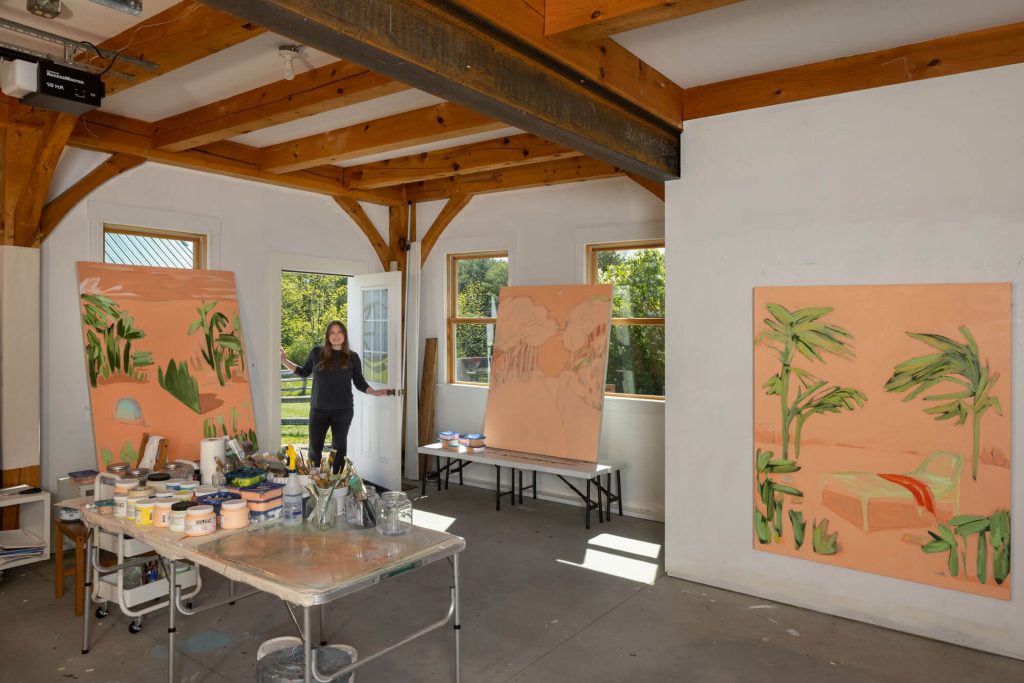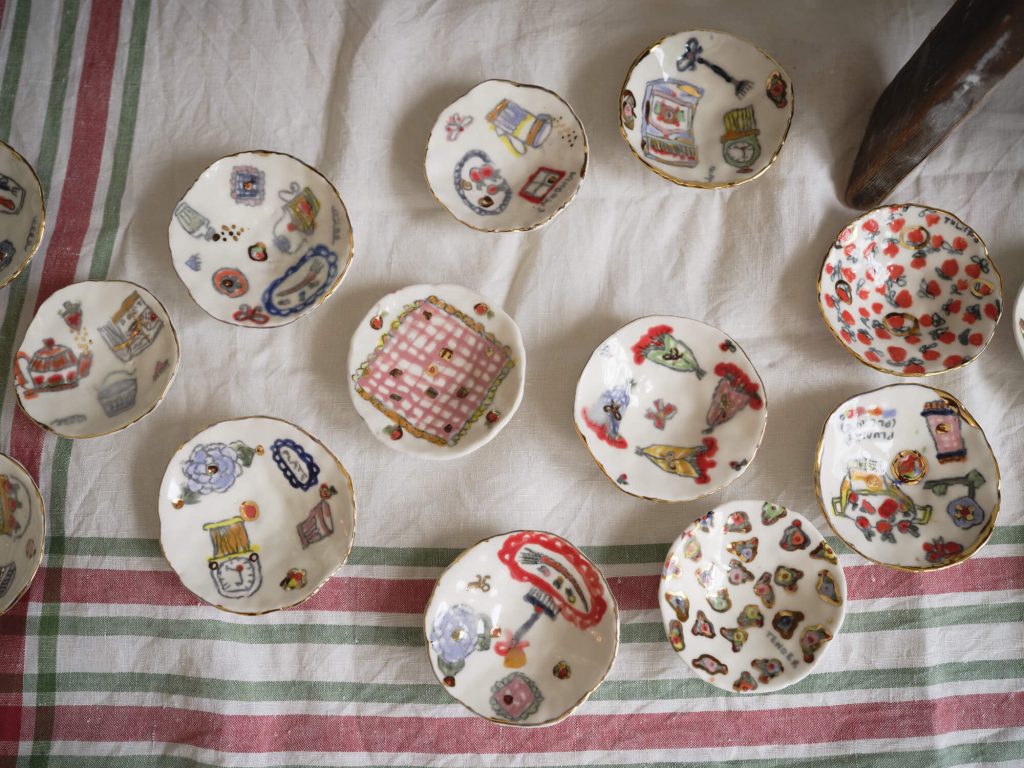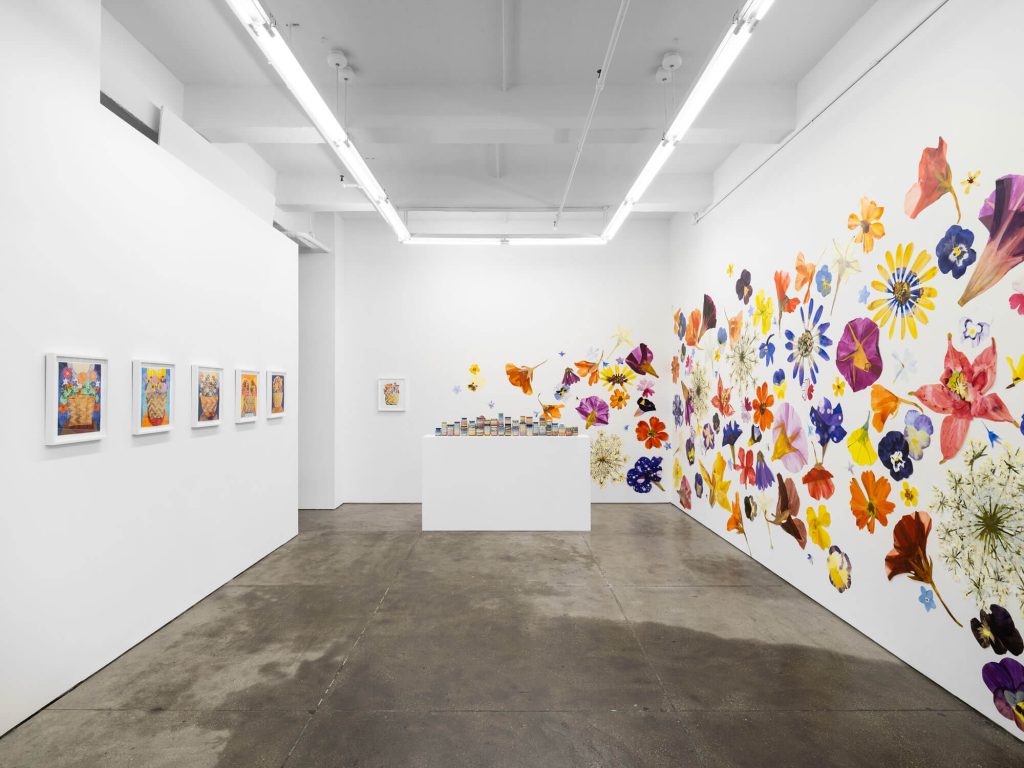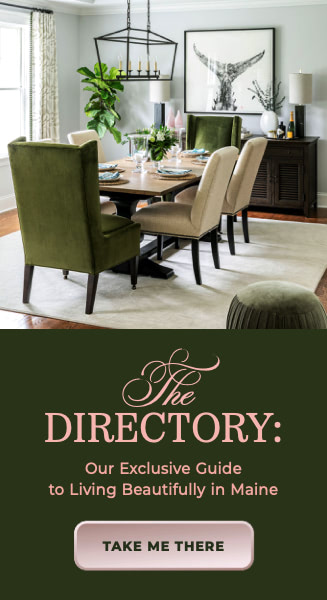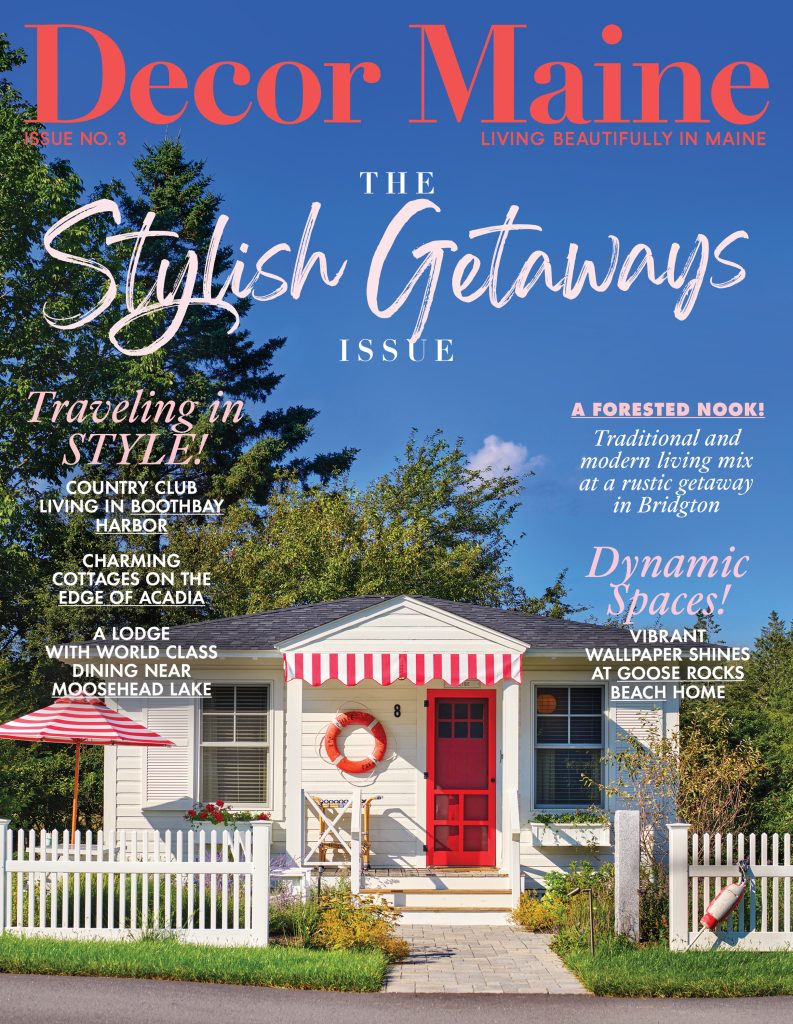“I’m not a gardener, that’s John’s thing, but the garden is a source of inspiration for my paintings,” Kayla Mohammadi tells me on a visit to her studio in a former schoolhouse on the Pemaquid peninsula, near the home and its gardens that she shares with her husband, the painter John Walker. The contemporary-style house, designed by the couple, sits on a tidal cove with uninterrupted water views. Bordering the expansive front lawn are abundant flower beds that contrast with the rocky shoreline. Kayla’s color-rich paintings are a profusion of texture, shape, and line, redolent with the pleasure of the senses, recalling a Matisse quote, “There are always flowers for those who want to see them.” Her love for pattern and bold hues is inherited from her Finnish mother and Iranian father, an aesthetic marriage of Marimekko and Persian miniatures, to which, in addition to Matisse, she brings a particular fondness for Bonnard, Gee’s Bend quilts, Alma Thomas, and Aboriginal art. An eclectic mix that serves her painterly explorations.
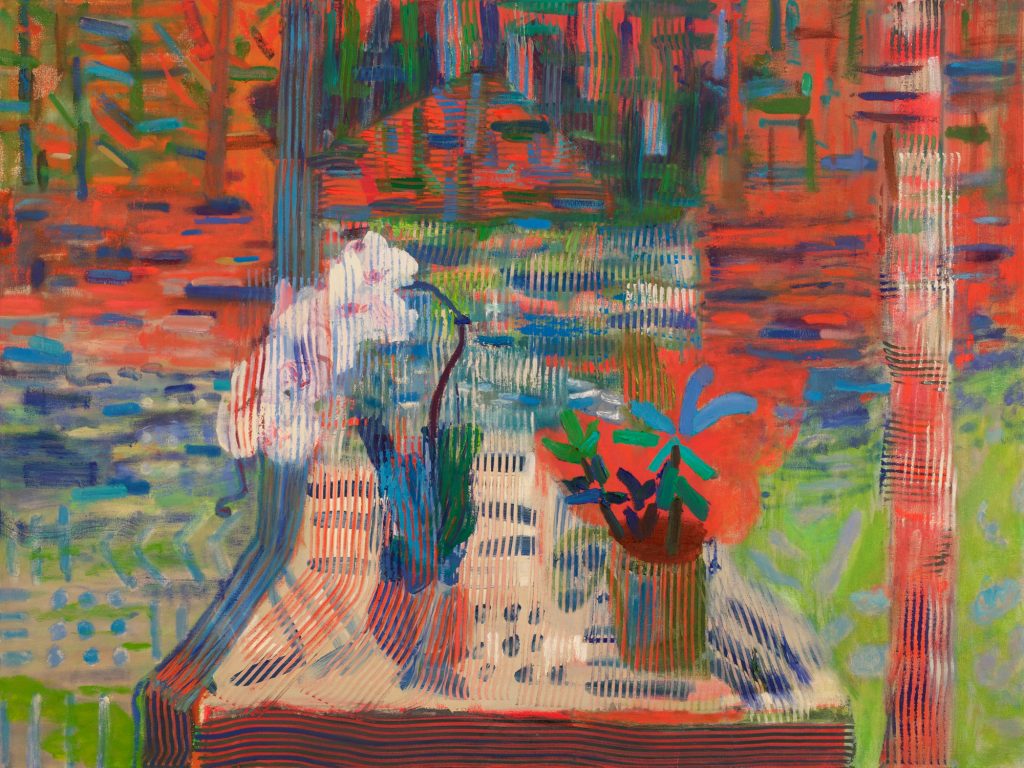
SM: I love how you use color to move the eye rhythmically across the canvas and within the pictorial space, setting up this beautiful tension between the surface and the layered depths. Can you talk about this quality in the work?
KM: This rhythmic movement of the eye is a quality that excites me in painting. I want an underlying tension between the back of the image—the abstract deep space—and the picture’s surface. I like your term “beautiful tension.” It’s something I try to accomplish in each work. Sometimes, it fails, but other times, it just comes together.
SM: You’ve spoken of the influence of your family background on your art. Were your parents or other family members artists?
KM: I’ve been fortunate to travel to Iran and Finland as a child and an adult. I vividly remember buying a Marimekko bedspread with big cadmium yellow flowers. I was 10, and it took me weeks to decide which color to get. It was not an art purchase, but at the time, I felt like I was buying the most extraordinary thing ever. I still have that bedspread!
Growing up, we had Finnish design—functional pieces like vases and tablecloths—combined with a Persian rug. And my parents had a book of Persian miniatures that I spent many hours looking through. As a child, I thought the two didn’t go together visually, but as I’ve gotten older, I do.
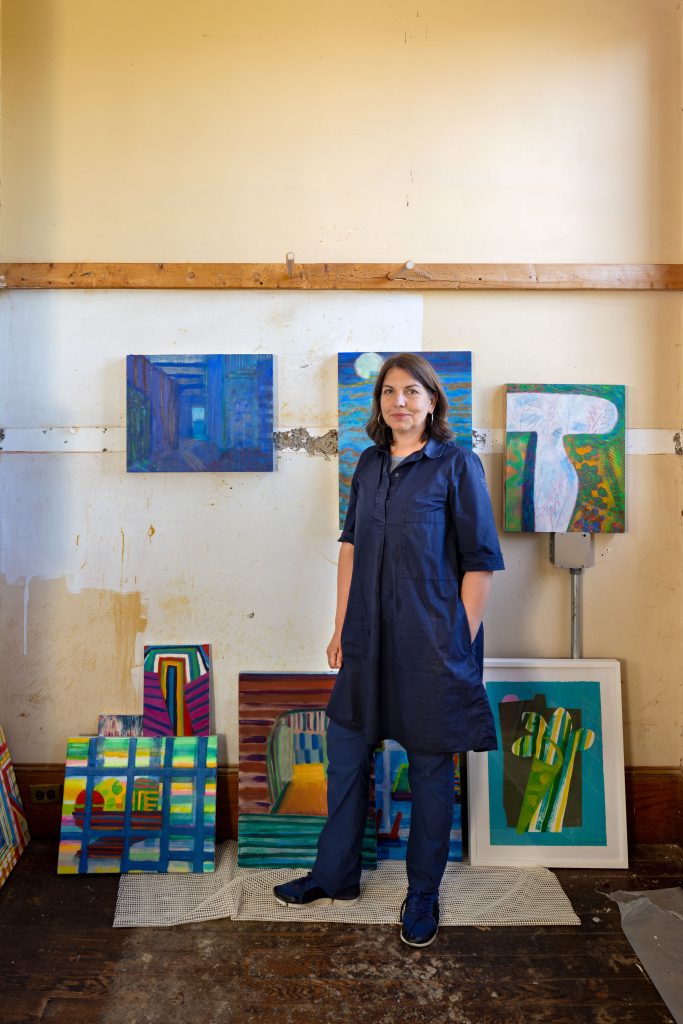
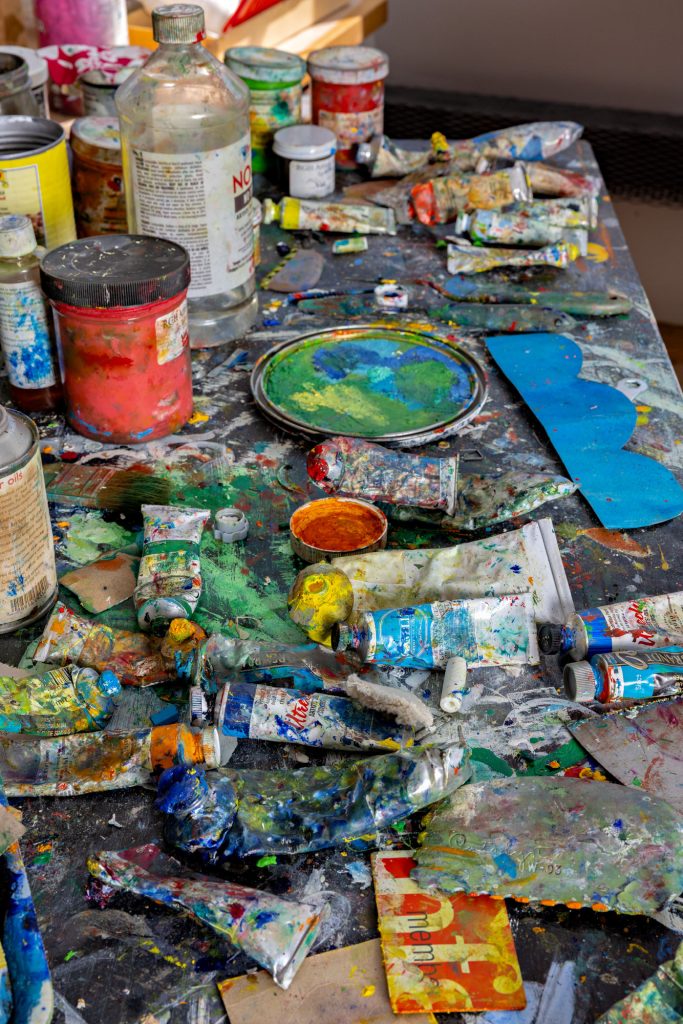
My Finnish grandmother was a seamstress and sewed the most amazing outfits. She was also talented at crafts, painting porcelain, crocheting, and knitting, and passed these interests and skills on to my mother.
SM: Matisse is a primary source of inspiration, but you also draw from many others. Do you approach the canvas with an image in mind, or does it emerge through the painting process?
KM: Both. I’ll have an image in mind, and then something happens on the canvas that I find exciting, and I allow myself to see where it takes me. There are several motifs that I return to often—a fruit bowl, a birdbath, a pier, and a sunset shape. Recently, I’ve been disrupting the image with a grid of X marks or lattice form. The idea came to me last year when I had a painting that wasn’t working. Since it wasn’t precious, I painted a lattice pattern over the entire image. The lattice was painted with varying colors and values, which abstracted the space in an interesting way.
SM: Besides brushes, your tool kit includes oil sticks, spray paint, combing tools, and stencils crafted from repurposed materials. How did you come to use such varied methods?
KM: Stenciling can be addictive! About 10 years ago, I began experimenting with creating my own stencils by cutting a shape from newspaper, something I saw John does in his paintings. You try that out, and suddenly, you see a stencil in everything—packaging materials, a rubber sink mat from Mexico, random things in recycling. Using tools besides brushes can add a new visual element to the work, which is exciting.
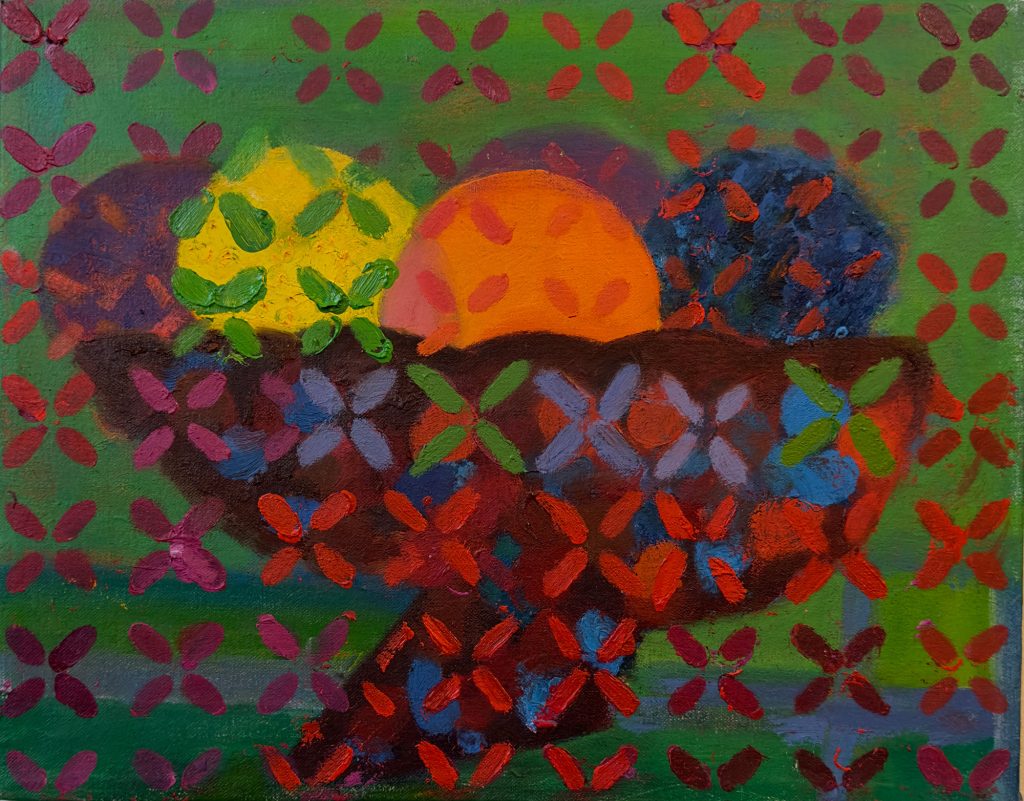
SM: What’s next for you? Is there another series in the works?
KM: I’m building on these ideas of overlap and color that I began last year. The X mark was a game-changer for me. It gave me visual and psychological choices. Are we being held back or able to walk through the space? Is the mark part of the motif, or is it a screen? The structure can also unify a painting. I have an upcoming residency at the Surf Point Foundation in York, and I plan to explore other marks besides the X and make a series of larger works. These will be part of my summer show at the Caldbeck Gallery in Rockland.
Kayla Mohammadi received her MFA from Boston University and BFA from the University of Washington. She is currently an Assistant Professor of Painting at Massachusetts College of Art and Design.
